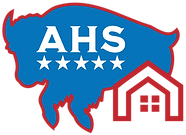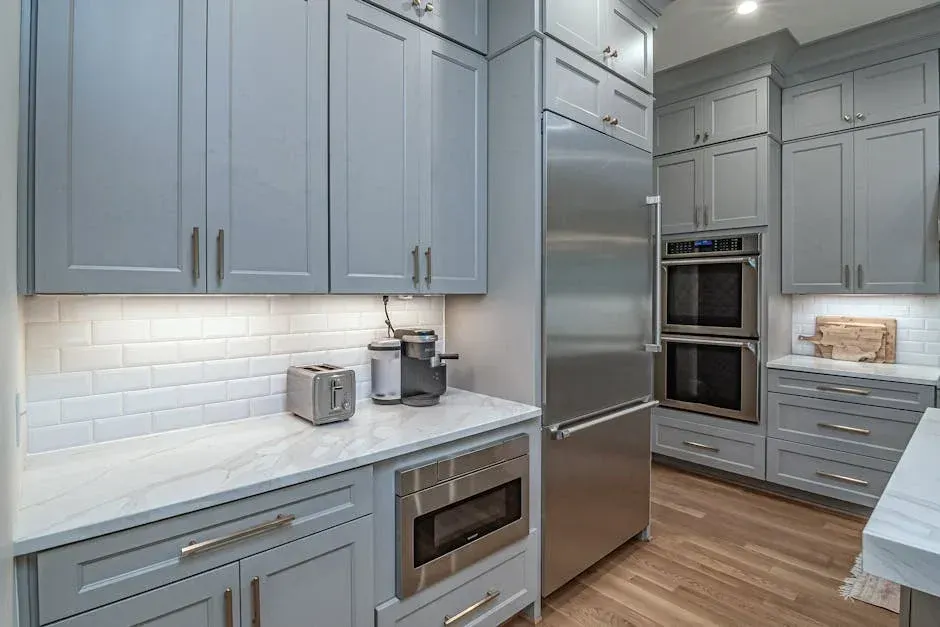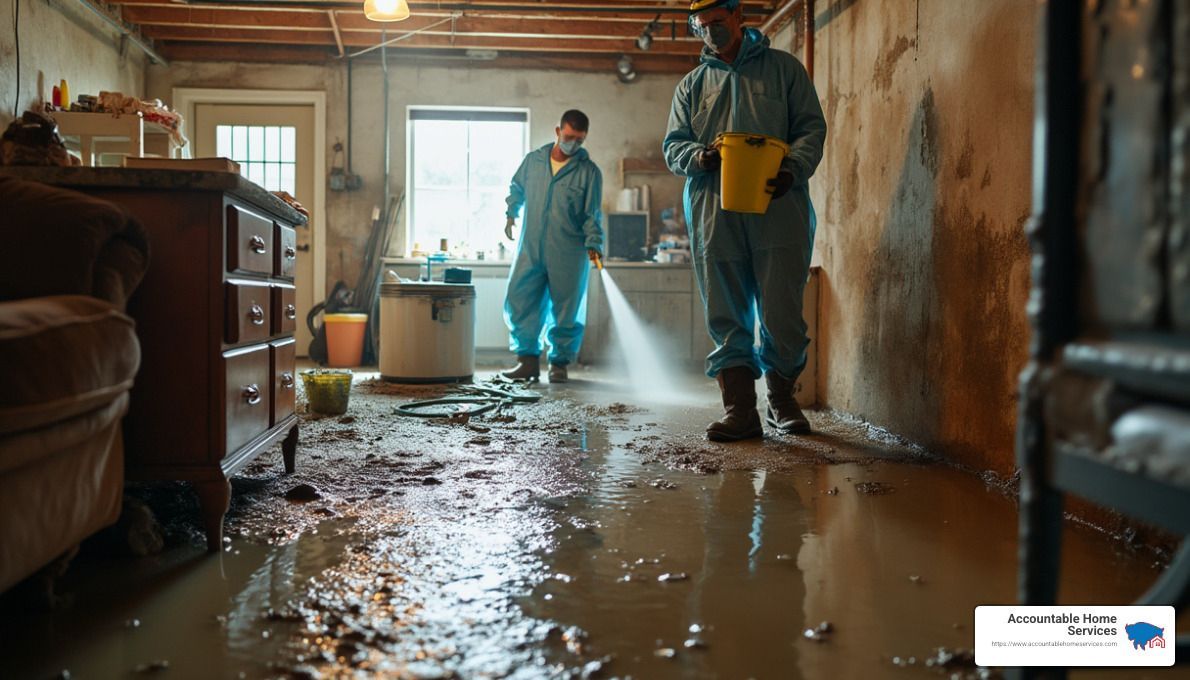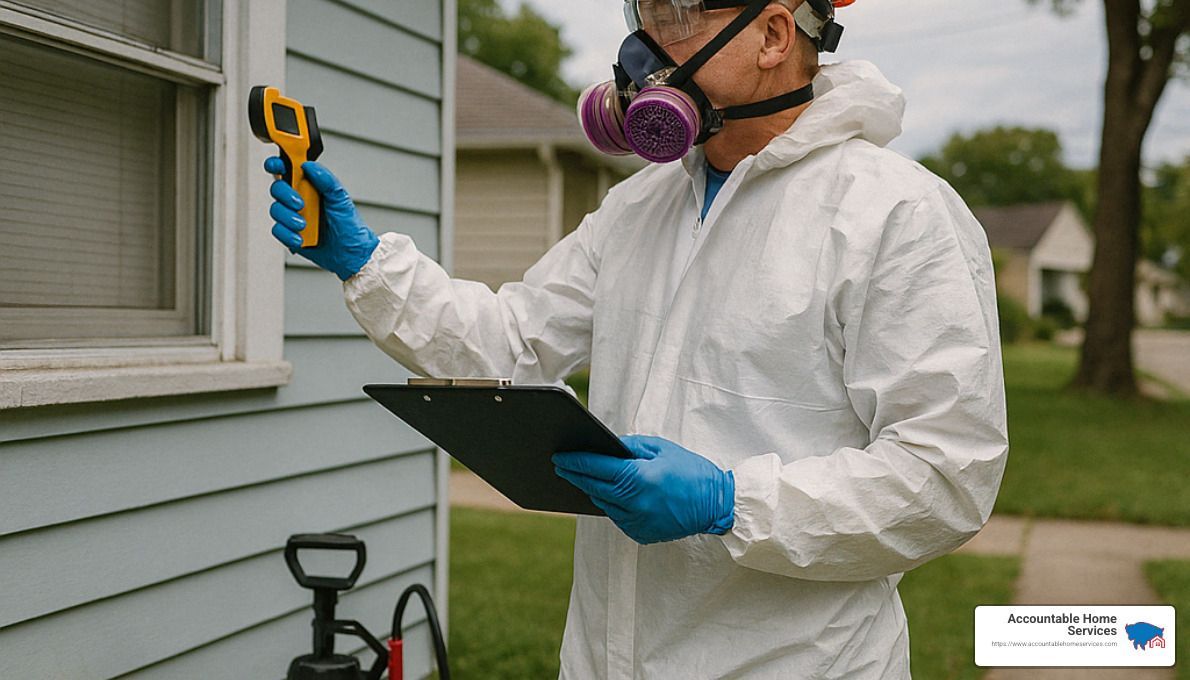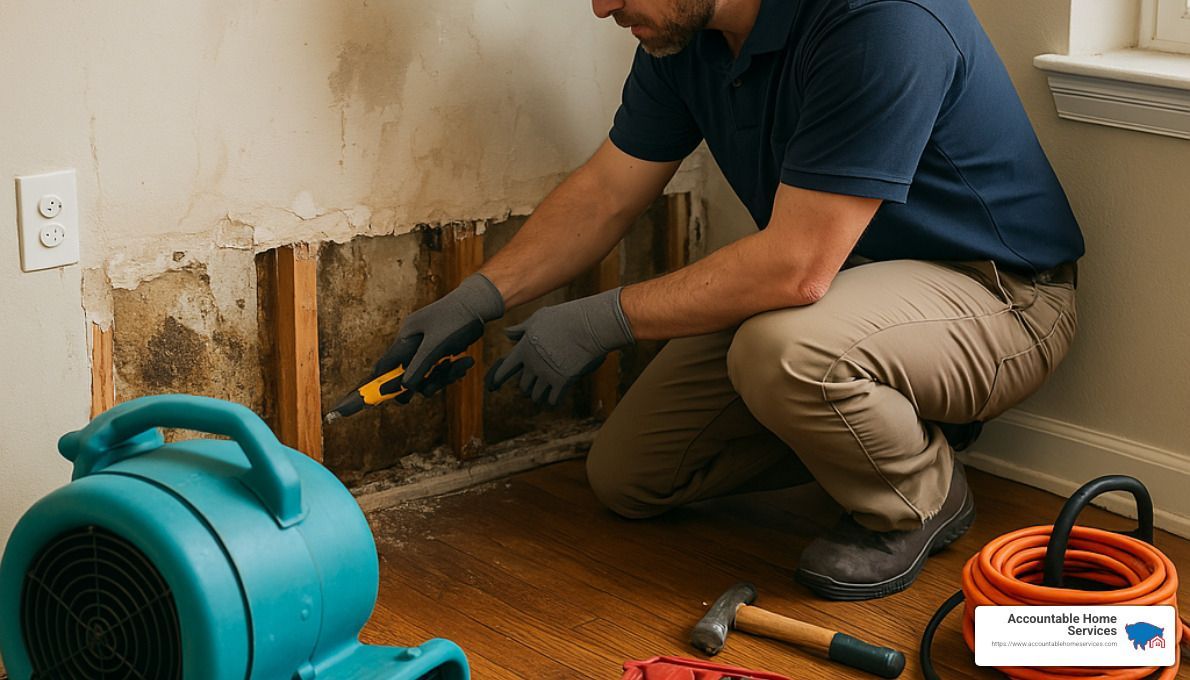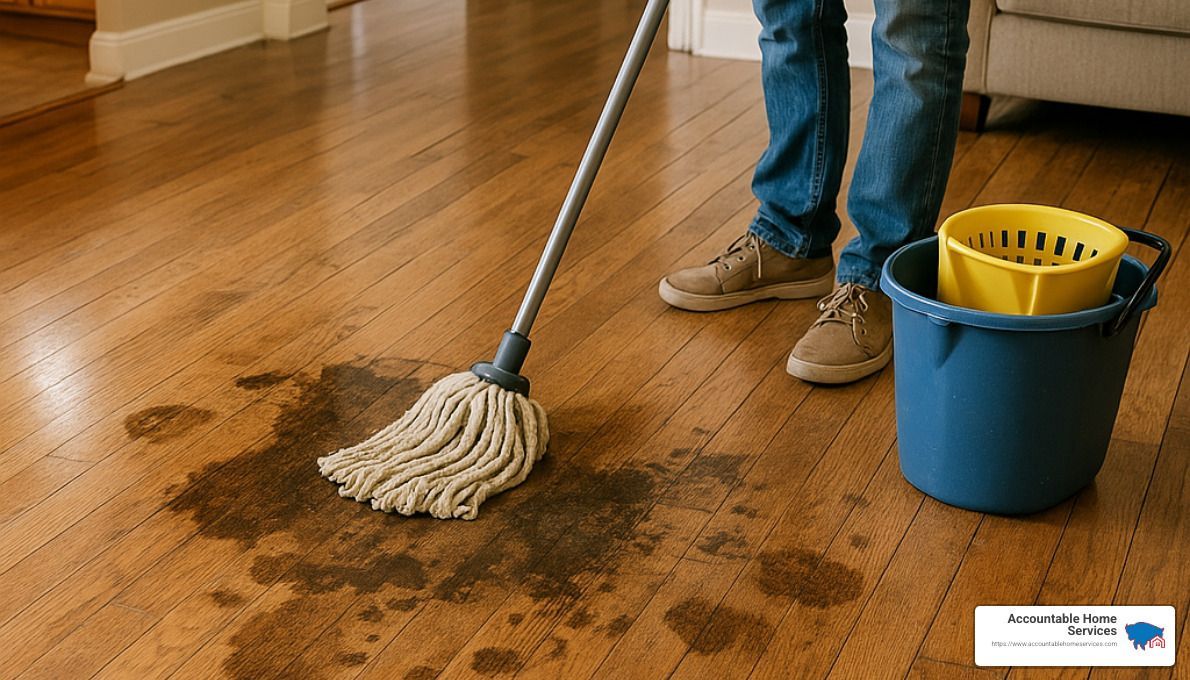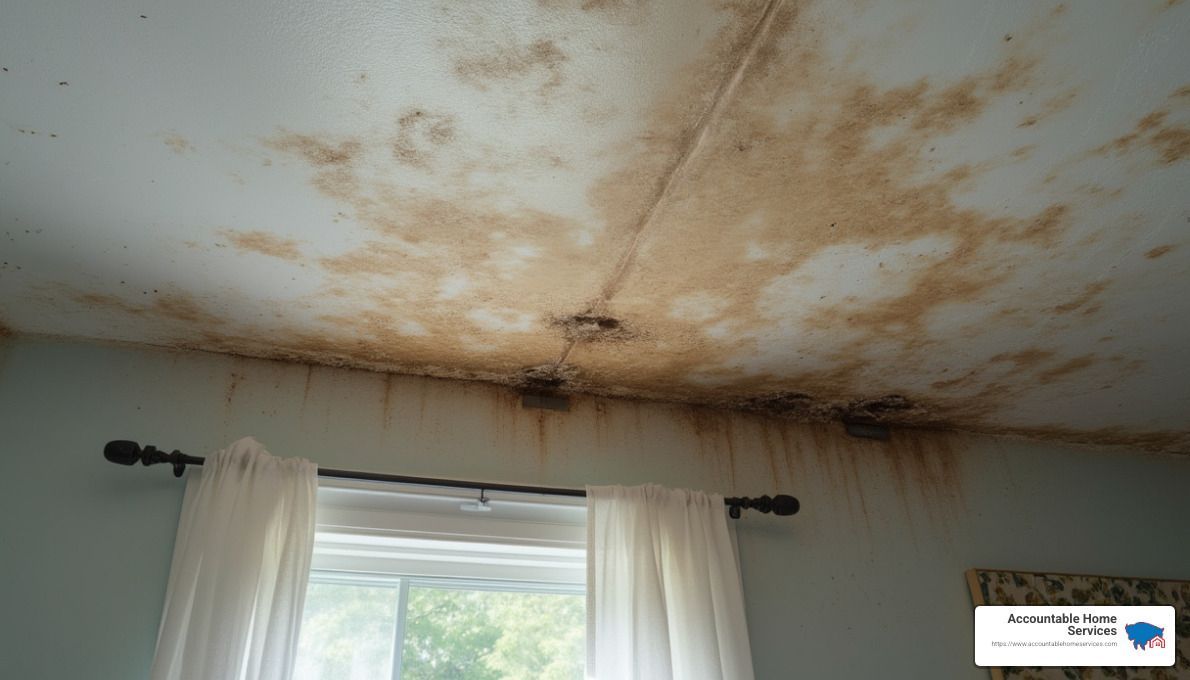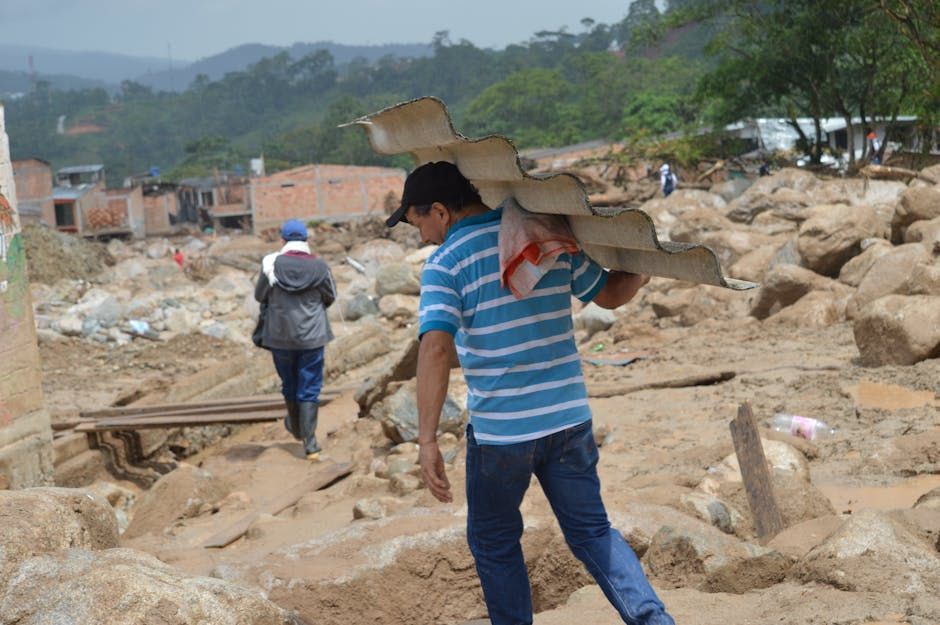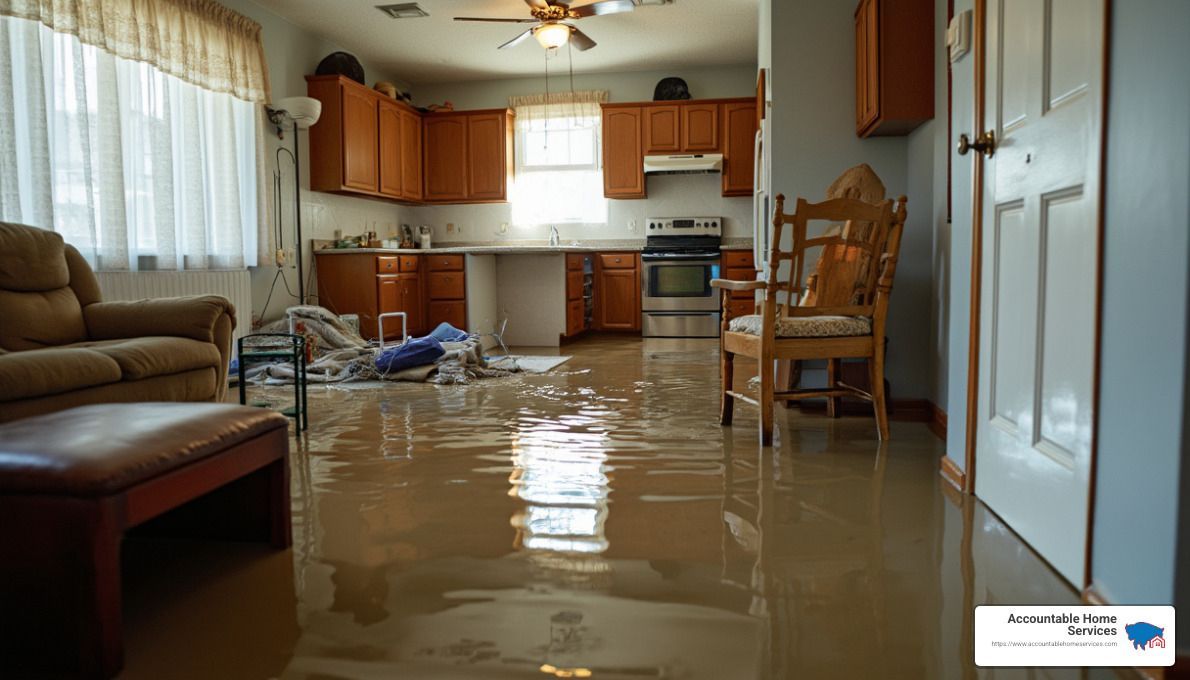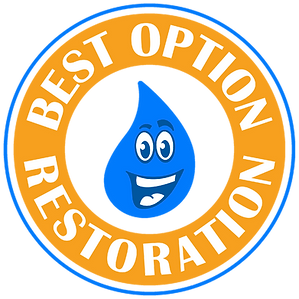Blog
Water damage restoration process is essential for any homeowner facing unexpected water intrusion. Here's a quick overview of the steps involved:
- Inspection: Identify the water source and assess damage.
- Water Extraction: Remove standing water quickly.
- Drying and Dehumidification: Use fans and dehumidifiers to dry the area.
- Cleaning and Sanitization: Eliminate contaminants and prevent mold.
- Restoration: Repair damaged structures and return to pre-loss condition.
Water can wreak havoc on your home, causing structural damage and posing health risks due to mold and bacteria. Ignoring these issues can lead to bigger problems and costly repairs. That's why knowing the water damage restoration process is crucial for anyone living in the Denver Metro Area.
My name is Mike Martinez, owner of Accountable Home Services. With years of experience in the water damage restoration process, I know the importance of quick action and skilled restoration to protect your home and health. Let's dive deeper into understanding water damage and how to combat it effectively.

Understanding Water Damage
Water damage can occur in many ways, and understanding its causes, signs, and categories is the first step in addressing it effectively.
Causes of Water Damage
Water damage can result from a variety of sources. Some common causes include:
- Burst or Leaking Pipes: Often due to age or freezing temperatures, these can cause significant flooding.
- Clogged Drains and Gutters: When gutters are blocked, water can overflow, leading to leaks and structural damage.
- Faulty Appliances: Water heaters and washing machines can malfunction, causing leaks.
- Natural Disasters: Severe weather conditions, like thunderstorms or hurricanes, can lead to flooding.
- Roof Damage: Inefficient drainage or missing shingles can allow water to seep into your home.
Understanding the root cause is crucial for a successful water damage restoration process.
Signs of Water Damage
Detecting water damage early can prevent further issues. Look for these signs:
- Swollen or Warped Materials: Wood and drywall may swell or warp due to moisture.
- Cracks and Peeling Paint: These can indicate water intrusion in walls or ceilings.
- Musty Odors: A damp smell often signals hidden water damage.
- Mold or Mildew: Visible growth on surfaces is a clear sign of moisture problems.
- Water Stains: Discoloration on walls or ceilings can be an early warning.
Categories of Water Damage
Water damage is classified into three categories based on contamination levels:
- Category 1 (White Water): Clean water from sources like faucets or broken pipes. This is the least harmful.
- Category 2 (Gray Water): Contains some contaminants, such as water from dishwashers or washing machines.
- Category 3 (Black Water): Highly contaminated water, often from sewage or flooding. This poses serious health risks and requires professional cleanup.
Understanding these categories helps determine the appropriate response and safety measures needed.
By recognizing the causes, signs, and categories of water damage, you can take swift action to mitigate its effects. Whether it's a simple leak or extensive flooding, being informed is your best defense against water damage.
Next, we'll explore a step-by-step guide to the water damage restoration process, ensuring you're prepared to tackle any water-related issue in your home.
Water Damage Restoration Process
When water invades your home, acting quickly is essential. The water damage restoration process is a series of steps designed to return your property to its original state. Here's how it works:
1. Inspection
The first step is a thorough inspection. Specialists assess the extent of the damage and identify the water source. They classify the water damage into categories and classes. This helps determine the contamination level and the drying methods needed.
- Category 1: Clean water from sanitary sources.
- Category 2: Gray water with some contaminants.
- Category 3: Black water, which is hazardous and requires careful handling.
Understanding the class of damage, from Class 1 (least severe) to Class 4 (most severe), helps in planning the restoration.
2. Extraction
Once the inspection is complete, the next step is water extraction. This involves removing standing water using specialized equipment. Extractors like industrial vacuums and submersible pumps are used to quickly remove large amounts of water.
Removing water fast is crucial to prevent further damage and reduce drying time. Hidden water pockets may be detected using moisture meters or infrared cameras.
3. Dehumidification
After extraction, the focus shifts to drying and dehumidification. This step is key to eliminating moisture from materials and the air. Dehumidifiers and air movers are used to speed up the process. These tools help prevent mold growth and structural damage.
In some cases, windows and doors may be opened to improve air circulation, but professional equipment is usually more effective.
4. Sanitation
Sanitation is vital to ensure a safe living environment. Depending on the contamination level, surfaces may need to be cleaned with antimicrobial solutions. Specialists wear PPE such as masks and gloves during this process to protect themselves from potential hazards.
For Category 3 water damage, thorough cleaning with specialized equipment is necessary to remove harmful pathogens.
5. Reconstruction
The final step is to repair or replace damaged materials. This could involve minor repairs, like patching drywall, or major reconstruction, like replacing floors or ceilings.
Reconstruction ensures that your home is restored to its pre-damage condition. Skilled technicians assess which materials can be salvaged and which need replacement, ensuring a cost-effective restoration.
The water damage restoration process is comprehensive and requires professional expertise to handle effectively. With locations in Broomfield, Westminster, Thornton, Northglenn, Arvada, Boulder, Denver, and Longmont, Accountable Home Services is ready to assist you in restoring your home efficiently.
Next, we'll dive into a step-by-step guide to help you steer the water damage restoration process with confidence.
Step-by-Step Guide to Water Damage Restoration
When faced with water damage, following a structured approach is crucial. Here's a simple guide to help you understand each step of the water damage restoration process.
Inspection
Begin with a detailed inspection. Identify the water source and assess damage severity. Classify the water type—clean, gray, or black—as this affects the cleanup approach. Use this assessment to plan the necessary steps for restoration.
Extraction
Next, remove all standing water. Use industrial vacuums and submersible pumps to efficiently extract water. Quick extraction prevents further damage and speeds up drying. Moisture meters or infrared cameras can help find hidden water pockets.
Drying
After extraction, focus on drying. Use dehumidifiers and air movers to remove moisture from the air and materials. This step is essential to prevent mold growth and structural damage. While opening windows can help, professional equipment is more effective.
Cleaning
Sanitize all affected areas to ensure safety. Depending on the water type, cleaning might involve antimicrobial solutions. For black water, thorough cleaning is necessary to eliminate health risks. Technicians wear PPE to protect themselves during this process.
Repair
Finally, repair or replace damaged materials. This could range from fixing drywall to more extensive reconstruction like replacing floors. Skilled technicians decide what can be salvaged and what needs replacement, ensuring your home is restored efficiently.
By following these steps, you can steer the water damage restoration process effectively. Up next, we'll explore the tools and equipment essential for each stage of restoration.
Essential Tools and Equipment
In the water damage restoration process, having the right tools and equipment is vital. Let's explore the essentials that professionals use to restore your home efficiently.
Extractors
Extractors are the first line of defense against standing water. These powerful machines, like industrial vacuums and submersible pumps, swiftly remove large volumes of water. This step is crucial for preventing further damage and speeding up the drying process.
Portable wet/dry vacuums come in handy for leftover surface water. They ensure that no water is left behind, even in hard-to-reach areas.
Dehumidifiers
Once the water is extracted, dehumidifiers take over. These machines pull moisture from the air, reducing humidity levels and preventing mold growth. Industrial-grade units are more effective than standard residential models, handling larger spaces and higher moisture volumes.
Monitoring humidity is key. Professionals use hygrometers to ensure dehumidifiers are working effectively, making adjustments as needed to achieve optimal dryness.
Air Movers
Air movers, or heavy-duty fans, are essential for drying wet materials. They circulate air across surfaces, accelerating evaporation. When used alongside dehumidifiers, air movers help dry walls, floors, and furniture quickly and thoroughly.
Strategic placement of air movers ensures maximum airflow and efficient drying, minimizing the risk of structural damage.
Personal Protective Equipment (PPE)
Safety is paramount in water damage restoration. Technicians wear PPE such as N-95 masks, gloves, goggles, and protective clothing to shield themselves from harmful contaminants.
This gear is especially important when dealing with black water or mold, where health risks are higher. Proper protection ensures the safety of restoration teams and the effectiveness of the cleanup process.
Having the right equipment is crucial for a successful water damage restoration process. These tools not only make the job efficient but also ensure safety and thoroughness. Next, we'll tackle some frequently asked questions about water damage restoration.
Frequently Asked Questions about Water Damage Restoration Process
What is the typical cost for water damage restoration?
The cost of water damage restoration can vary widely, depending on several key factors. Extent of damage is a major determinant—minor leaks might be less costly, whereas extensive flooding could lead to higher expenses. Size of the affected area also plays a role; larger spaces require more resources and time to restore.
Additionally, type of water involved can impact costs. For instance, clean water from a broken pipe is simpler to handle than black water from sewage, which demands more intensive cleaning and sanitation.
On average, homeowners might spend anywhere from $1,200 to $5,000 for restoration, but this can climb higher in severe cases. It's always wise to get a professional assessment to understand the specific needs and costs for your situation.
How long does the water damage restoration process take?
The timeline for water damage restoration varies based on several factors. Severity of damage is a primary influence—minor issues might be resolved in a few days, while major flooding could take weeks or even months.
Another factor is the presence of contaminants like mold, which requires additional time for thorough removal and prevention of future growth. Efficiency of the restoration process itself, including the use of advanced equipment and skilled professionals, can significantly influence the duration.
Generally, the drying process alone might take 2 to 5 days, followed by additional time for cleaning, repairing, and restoring the affected areas. It's crucial to start the process as soon as possible to minimize damage and shorten the overall timeline.
Can a house with water damage be repaired?
Yes, a house with water damage can often be repaired, but the extent of repairability depends on several factors. Structural concerns are critical—if water has compromised the foundation or load-bearing elements, extensive repairs may be necessary.
Items like drywall, flooring, and insulation might need replacement, but many modern restoration techniques and tools allow for effective restoration of less severely damaged areas. Professional assessment is essential to determine what can be salvaged and what must be replaced.
In most cases, with prompt and proper restoration, homes can be returned to their pre-damage condition. Consulting with experienced restoration specialists ensures that repairs are done safely and effectively, preserving the integrity of your home.
Conclusion
In the face of water damage, choosing the right restoration partner is crucial. Accountable Home Services stands out as a trusted ally, offering comprehensive solutions custom to your needs. With our family-owned roots in the Denver Metro Area, we bring a personal touch to every project, ensuring that each client feels supported and informed throughout the process.
Our team of certified professionals excels in water damage restoration, leveraging cutting-edge equipment and techniques to restore your property swiftly and effectively. We understand the urgency of water emergencies, which is why we offer a 24/7 emergency response. This commitment ensures that we are there when you need us most, minimizing further damage and stress.
At Accountable Home Services, we prioritize transparent communication and professional expertise, working directly with your insurance company to streamline the claims process. This approach not only saves you time but also provides peace of mind, knowing that your home is in capable hands.
When disaster strikes, trust Accountable Home Services to restore your home with care and precision. For more information on our services, visit our Water Damage Restoration page. Let us help you protect and improve your home with our reliable, long-lasting solutions.
